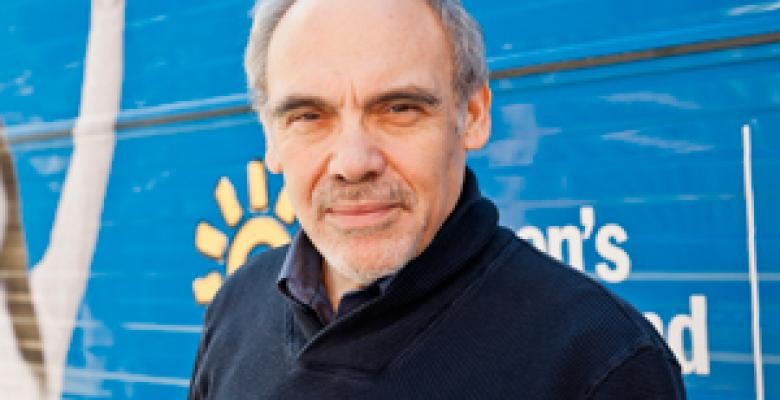Mailman School Disaster Expert Irwin Redlener on the Lessons of Hurricane Sandy

When major disaster strikes, Dr. Irwin Redlener is rarely far behind. As a professor at the Mailman School of Public Health and director of the National Center for Disaster Preparedness, Redlener has brought health care to victims of calamities ranging from 1992’s Hurricane Andrew to Hurricane Sandy, which wreaked havoc in the northeast last month. In his 2006 book, "Americans at Risk: Why We Are Not Prepared for Megadisasters and What We Can Do Now," Redlener staked out a position as one of the nation’s leading experts on how to improve the nation’s emergency response capacity. That made him a logical choice for New York Gov. Andrew Cuomo to tap in the aftermath of Hurricane Sandy. On Nov. 15, Cuomo asked Redlener to co-chair a commission charged with coming up with ways to ensure that critical systems and services in New York state are prepared for natural disasters and other emergencies. The most recent issue of The New England Journal of Medicine just published Redlener’s editorial laying out the public health challenges raised by the storm and what issues to look for in the months ahead. He shares his views here.
Q. What do you plan to do on Gov. Cuomo’s committee?
We have a large agenda and a very tight time line (Jan. 3) to try and make recommendations that are sound and doable. To begin with I’m very interested in the ability of hospitals and other vital institutions to withstand and respond to disasters. But the bigger issue is our ability to understand the needs of vulnerable populations, meaning children, the frail elderly and people with chronic medical conditions. That to me is the litmus test. If we can’t protect those of us who are most vulnerable, then we are failing to meet the challenges of true disaster preparedness.
Q. What lessons have we learned from Hurricane Sandy?
For one, the evacuation policy was ineffective. After Hurricane Irene last year, we learned that a large portion of the population in Zone A did not evacuate, and it’s looking like even more citizens in the danger zone did not comply with (Mayor Michael Bloomberg’s) mandatory evacuation order when Hurricane Sandy was threatening the coastline last month. So we either have to get better at helping people shelter in place during events like this or better at figuring out why people won’t evacuate. A lot of people told me that the shelter conditions were worse than staying at home. They worried about bringing their small children with asthma to these very crowded shelters. They worried about the security of their possessions if they left their houses. In terms of getting people to evacuate, we know that some people are less influenced by the mayor but more influenced by their clergy, for example.
Q. What can be done to better protect the city?
The infrastructure in the United States—the bridges and tunnels, the electrical grid—are extremely fragile. And climate change and global warming are increasing the severity and frequency of storms. We’re going to have to do something fundamental to change the rate of dangerous climate change. We’re going to need seawalls and much better protection of subways and electrical systems for our city. In New York, our coastlines in particular are vulnerable to major storms with flooding. We can either move coastal structures out of harm’s way, or we can do something dramatic to protect the coastline. And if we don’t get serious about slowing or reversing climate change and global warming, we’re going to inevitably see more storms, more flooding, more surges and more danger to the institutions and dwellings that are close to the coastline. There’s no avoiding the fact that our region, like other coastlines across the planet, face a future of severe weather and more disasters like Sandy.
Q. Your editorial in "The New England Journal of Medicine" lays out the public health challenges of the storm. What are they?
There’s a whole range of concerns, from contamination of water and soil due to malfunctioning sewage plants and water purification plants to the Gowanus Canal in Brooklyn, which is a Superfund toxic waste dump site. Flooding and overflow from that canal may have released some dangerous toxins into the environment. And we can anticipate major problems with dangerous mold infestations in buildings soaked by the storm surge. In addition, many people lost continuity of medical care when they were displaced and there may some consequences of that, especially for people with chronic illnesses like asthma, high blood pressure and heart disease. So they will need to be carefully tracked. And then there is the psychological impact.
Q. What long-term impact do you think this disaster will have?
It entirely depends on how rapidly we can get families back to a normal situation, or a new normalcy, where they are actually better off than they were before. Some of the things we worry about are children getting displaced for extended periods of time, unable to go back to the schools that were damaged, living in unsettled circumstances with persistent uncertainty about their future. That can be highly stressful for families generally and for children in particular. Some kids were living in houses that were completely destroyed. Some may never be able to go back to their original communities. Families will need support during the recovery period. Some will need extra financial assistance, case management, psychological aid and so on. And all of these issues will play into how rapidly and effectively kids affected by the disaster can get back to a sense of normalcy. The longer they are not there, the more at risk they are of suffering longer term mental health consequences.